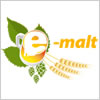

China: After wresting the No. 1 brewer and beer consumer title from the States, China's beer market is now undergoing shifts in its industry of seismic proportions, Beverage World wrote on October 15.
Growing at an astounding pace in recent years the Chinese beer market has been spurred on by the massive levels of foreign investment in the market, a rise in the average level of consumer spending and the economic reform policies of the Chinese government. Today, China's beer industry is characterized by fragmentation as dozens of regional breweries aim for regional dominance. Many small bottlers are simply struggling to survive, while several ambitious international superpowers are muscling in on local territory. Among them Anheuser-Busch, Inc. (St. Louis, MO, USA), the world's largest brewer, finally secured 99.66 percent of Harbin Brewery Group on July 9, after more than one month of bidding and counter-bidding. A-B made a cash offer of US$720 million and announced that it was planning to take the mainland brewery private. This was a hard-fought battle with London-based SABMiller which could have originally gone either way.
The whole of China has seen unprecedented social and commercial changes. Good news for brewers is that increases in personal income and the standard of living in China over the past 15 years have contributed to a dramatic increase in beer consumption. China consumed 25 million tons of beer in 2003 whereas demand is flat elsewhere worldwide. But while China may be the largest beer-consuming nation in the world, its citizens drink an average of only 18 liters per year each, a mere sip compared with the 80 liters quaffed by Europeans, or the 50 liters per head consumed in Japan and the 84 liters in the United States.
Beer consumption in China has increased by a total of 40 percent since 1997, while the growth in many other major beer markets either has remained static or slowed. China's market, with $6 billion in annual sales, is estimated to grow at a rate of 6 to 8 percent, while those more developed markets in the United States and Europe are expected to expand at a rate of merely 1 to 2 percent.
After failing to tap this market with their own brands, foreign brewing giants now are fighting to make deals and acquisitions throughout the People's Republic. "The merger and acquisition frenzy in China's beer market started in October 2002, when US beer giant Anheuser-Busch raised its shares in Tsingtao Beer from 4.5 percent to 27 percent," says Qiao Baijun, an industry analyst from China Galaxy Securities. "That transaction set a new direction, which has been closely watched by many other foreign brewers frustrated by their previous efforts to gain entry into the Chinese market."
Price competition, too, is forcing smaller regional breweries to seek safety under the umbrella of larger brewers or foreign brewers. Back in 1996, there were 741 breweries in China, but as of June last year the number had shrunk to around 200. "China is an enormous country, and the differences in regional customs and lifestyles are huge, so three or four breweries cannot dominate 90 percent of the entire beer market like they can in Japan and the US. However, the shakeout will continue and I can imagine only around 30 companies left standing in another five or six years," says an industry insider.
Breweries that are unable to raise their products to international standards are likely to go to the wall. This has been happening for years. But there are so many companies that it will take some time to put everything in order in the billion-dollar industry. In aggregate, the smaller brewers have increased volume but at a slower pace than the larger brewers which offer premium brands with consistent quality. It is expected that the industry will consolidate over time and that the larger brewers, and in particular premium brands, will grow at a faster rate than the industry overall.
Foreign investors also have been incited by the profit potential of the burgeoning market. Foreign operators, faced with a 100-percent import levy on their beers, now happily can enjoy less costly investment restrictions. The industry as a whole could earn an annual aggregate of 100 billion yuan (US$12 billion) based on the premise that 1,000 liters of beer yields around 500 yuan (US$60.50).
More ties between domestic and foreign beer producers are inevitable as are more acquisitions. For fear of being left out of the true global brewer equation, overseas investors are competing savagely to buy the shares of domestic brewers, which in turn leads to badly needed investment in China's somewhat challenged industry.
뒤로
E-malt.com, the global information source for the brewing and malting industry professionals. The bi-weekly E-malt.com Newsletters feature latest industry news, statistics in graphs and tables, world barley and malt prices, and other relevant information. Click here to get full access to E-malt.com. If you are a Castle Malting client, you can get free access to E-malt.com website and publications. Contact us for more information at marketing@castlemalting.com .





